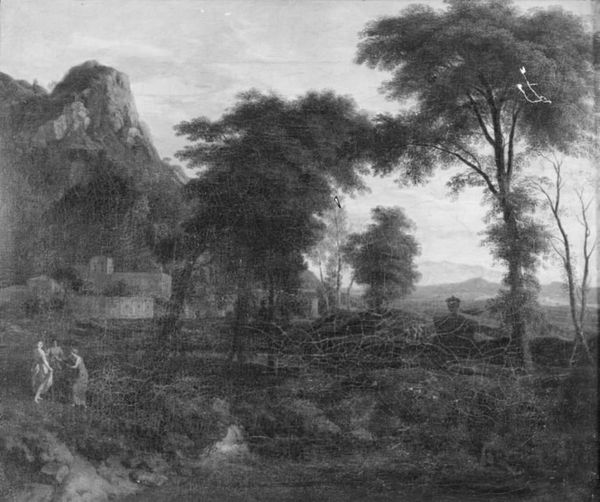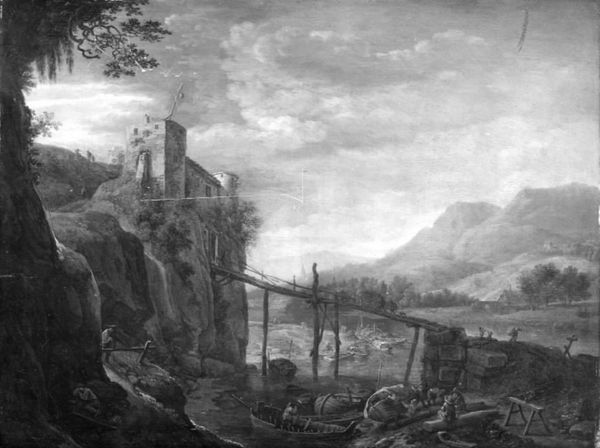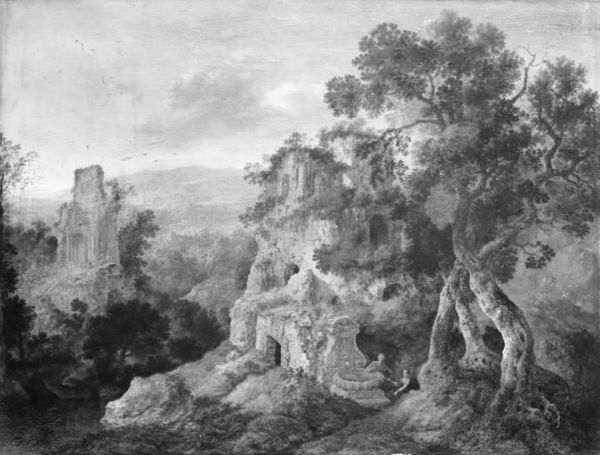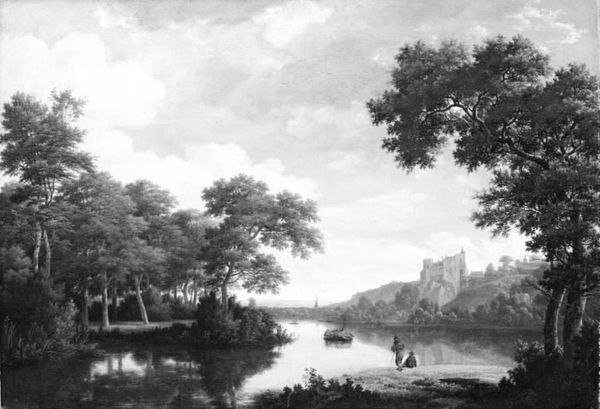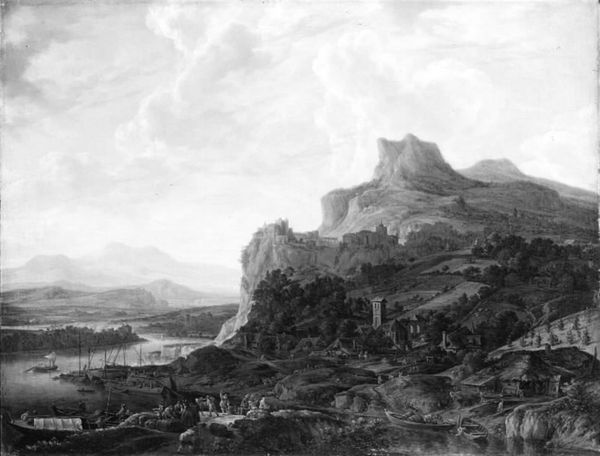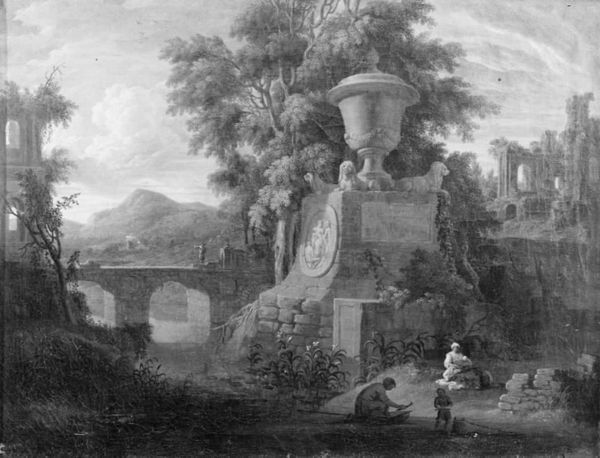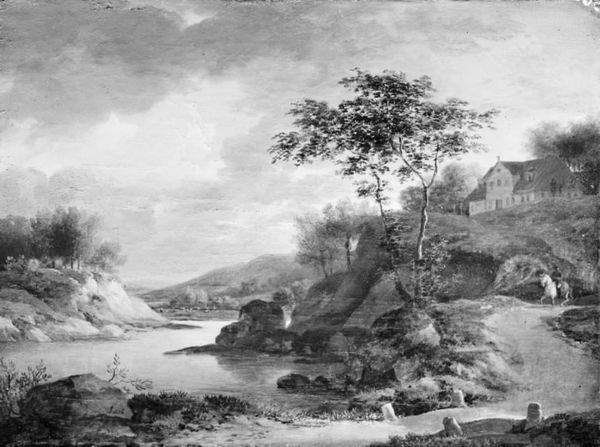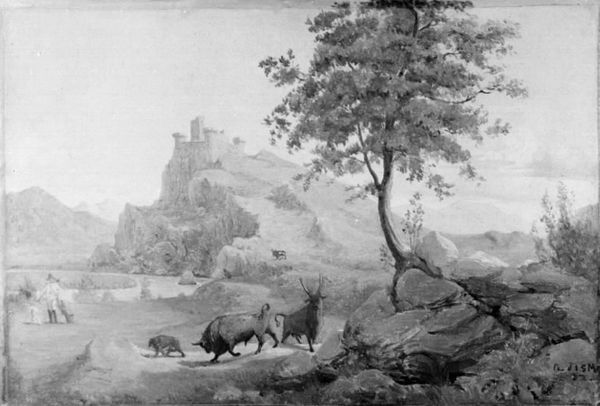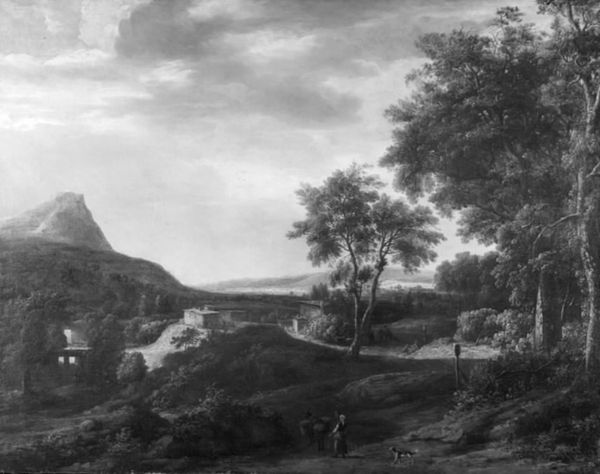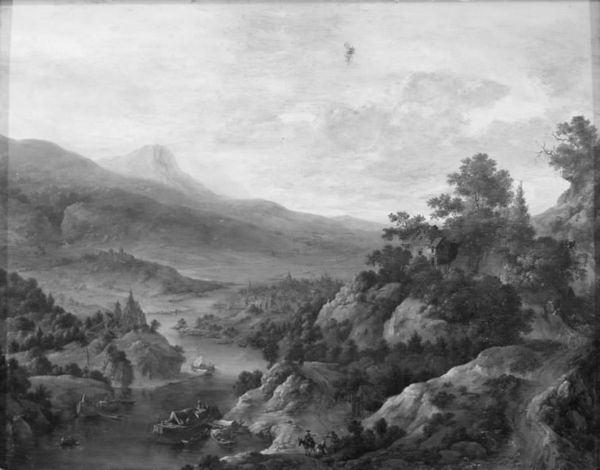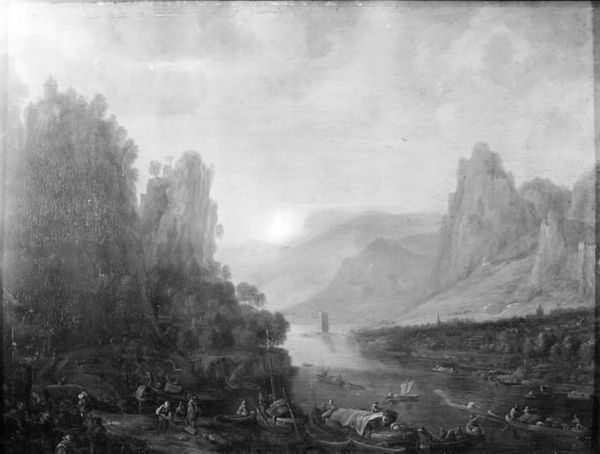
painting, wood
#
baroque
#
painting
#
landscape
#
wood
#
history-painting
#
academic-art
#
monochrome
#
monochrome
Dimensions: 47 cm (height) x 65.5 cm (width) (Netto)
Curator: Let's turn our attention to this captivating piece, "Landscape with Mountains and Ruins," rendered by an unknown artist around 1660. It’s an oil on wood panel, housed right here at the SMK. Editor: My first impression is how melancholic it feels. Even without vibrant colors, the detail suggests a scene heavy with history, almost as if it's a lament for what once was. The monochromatic scale contributes to the feeling. Curator: Precisely. The somber tone aligns with a broader artistic trend of the Baroque period, particularly in landscape painting, reflecting upon the transient nature of earthly power and the inevitable decay of even the grandest structures. These history paintings aimed to instill a sense of moral reflection. Editor: It's compelling how the ruined architecture contrasts with the natural world; mountains looming in the background suggest an indifference to human endeavors. How was a piece like this viewed politically or socially in its time? Curator: Given the period's religious and political upheavals, depictions of ruins became symbolic reminders of instability, not only of the past, but possibly cautionary allegories concerning contemporary powers and their future trajectories. Such landscapes were also increasingly acquired as statements of sophistication by a rising merchant class. Editor: So the 'monochrome' tag seems relevant beyond just the immediate visual description, implying an almost sepia-toned recall to history. And I find myself questioning, who were these figures that are painted as diminutive, walking down the road towards the monumental structure? Do they reflect the common population dwarfed by history? Curator: Indeed. It's important to view landscape paintings like this within the burgeoning public sphere for art. The landscapes invited viewers to consider their place in society. Editor: It definitely sparks reflection on how we, as individuals, navigate the ruins of our own historical and social landscapes today. A kind of intersection of the intimate human figure set against overwhelming socio-political power structures. Curator: A sentiment I find resonating centuries later! There's something genuinely universal and powerfully conveyed in these Baroque history-laden depictions. Editor: Yes, even with its roots deeply embedded in a specific period and artistic tradition, the painting encourages a very contemporary reading around power, the gaze, and social history. It's a perfect reminder to look backward while walking forward.
Comments
No comments
Be the first to comment and join the conversation on the ultimate creative platform.
